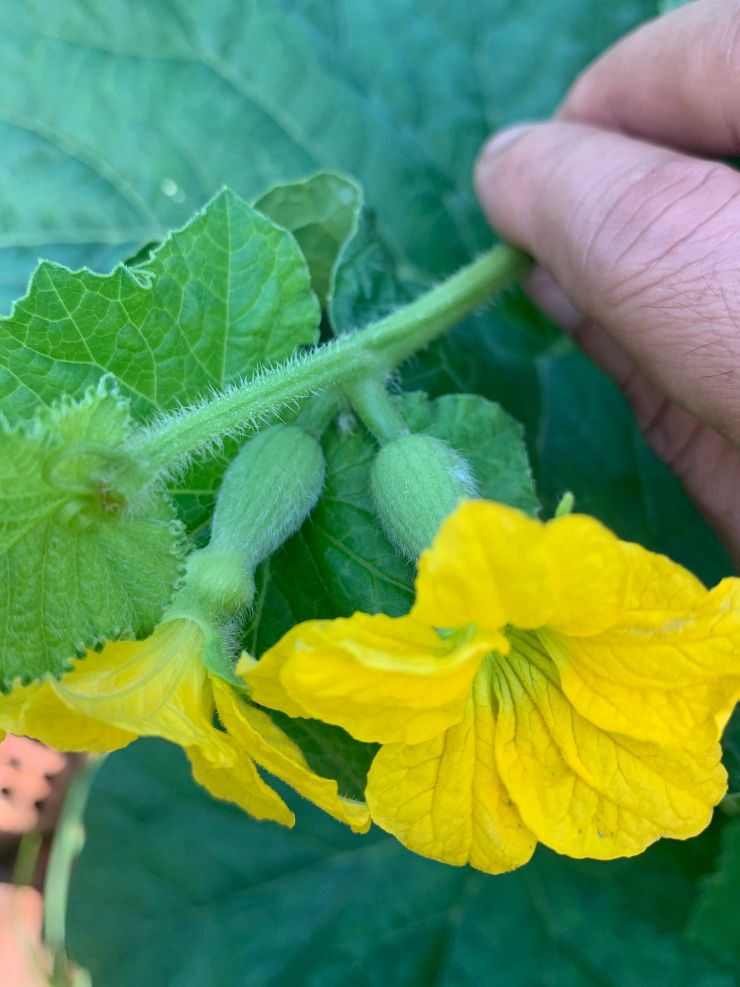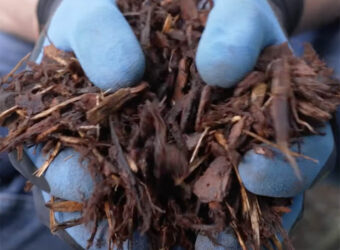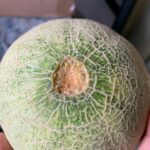Growing cantaloupe at home takes time and effort to be successful, nothing beats the sense of harvesting and eating cantaloupe that you grow yourself.
One of the most exciting moments during the cantaloupe growing process is the flowering and pollination stage. After investing a lot of time and effort in growing your cantaloupe from sowing, nurturing seedlings, and establishing strong vines, it’s important to understand how to hand-pollinate cantaloupes to ensure successful fruit development.
Trust me, even cantaloupe grown outdoors can be pollinated by helpful pollinators such as bees, and butterflies, but you don’t want all of your efforts to 100% rely on them, what happens if there are no fruit set on your plants?
Can You Hand Pollinating Cantaloupe?
You can definitely hand pollinating cantaloupe, hand pollinating cantaloupe in fact have some benefits that you should always do for your cantaloupe plants:
- You have the ability to choose which secondary or lateral branches you want to keep for your cantaloupe fruit set. The lower lateral branches where the fruit is set tend to produce sweeter but smaller fruits.
- Control 100% female flowers are pollinated and just wait to see if the fruit set well and wait a few days for fruit selection, you can also pick as many male flowers as possible to pollinate the female flower.
- Hand-pollinating your cantaloupe is one of the most enjoyable activities during growing the plant.
So, what are the drawbacks of doing this? Of course, the work is taking time and effort, because not all your female cantaloupe will bloom at the same time, even if you sow the plants/ transplant your plants at the same time, so be prepared your time about a few days up to a week for hand pollinate all of your cantaloupe plants and doing fruit selection in this time.
How to Hand Pollination Cantaloupe?
Identify Male and Female Flowers
Male flowers: Usually bloom first and bloom right at the corner of the main stem and leaves, male flowers have a long, thin stem with a single stamen in the center.
Female flowers: Female flowers are typically found at the first leaf of the secondary or lateral branches, and sometimes at the corner of the main stem and leaves. However, I usually pick off these flowers.
Female flowers usually bloom for only one day, occasionally for a second day, so it’s important to take your time to pollinate when the female flowers bloom to maximize the chance of fruit set.
Steps For Hand-Pollination
- The best time for hand-pollination, to achieve the best results, is typically between 6:30 – 9:30 am when the weather is sunny and dry
- Select a large male flower, typically found at the top of the plant, and carefully peel off the petals. Then, swipe the ends with pollen into the center of the female flower. For optimal results, you can pick 2-3 male flowers to pollinate a single female flower.
- People will suggest using a soft brush to pollinate, but I think it is difficult to do it that way because cantaloupe male flowers are small and dainty. So I prefer to keep it simple, do it my way might be hard at first several times but when you are familiar with it, it is easy and effective!
- After hand-pollinating the flowers, repeat the process for the rest of the female flowers. Monitor the fruit to ensure that it develops properly. If successful, the female flowers will start to develop into small fruits that will continue to grow and ripen.
What To Do After Hand-Pollination Your Cantaloupe?
Around 5 days after finishing the pollination process, it’s time to select the best cantaloupe to keep on the plant. At this stage, choose the best fruit on the plant and remove all the others, keeping only one fruit per plant. While it’s possible to keep more than one fruit, doing so can result in smaller and lower-quality fruits compared to keeping just one fruit per plant.
How To Select The Best Candidate?
- I usually pick the biggest one, but it also should have a good form and be located on healthy, large lateral branches.
- Picking the fruit at the 9th – 15th secondary branches, with the best being at the 12th and 13th secondary branches, is a preferred strategy. Fruits on these branches typically strike a balance between sweetness and size weight.
Fertilize It To Maximum Fruit Size
Make sure to fertilize your cantaloupe at this stage well, with a priority focus on the 3 weeks after pollination. During this time, the fruit will grow very rapidly and require an abundance of fertilizers to support its daily growth.






